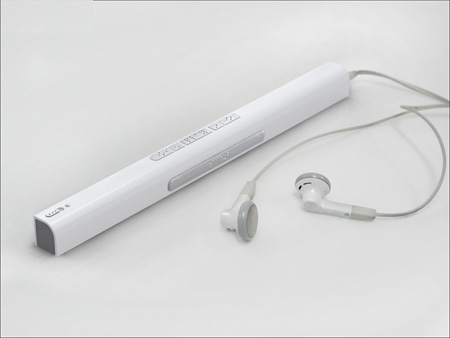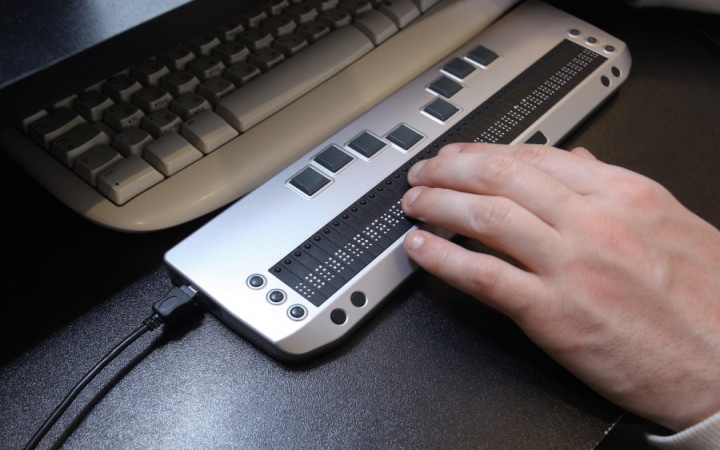Screen Readers for the Blind: Accessing Information Without Barriers
Screen Readers for the Blind: Accessing Information Without Barriers
Blog Article
Empowering Self-reliance With Assistive Innovation for the Blind
The integration of assistive innovation into the lives of people with aesthetic problems stands for a significant innovation in advertising self-reliance and self-sufficiency. From ingenious screen visitors to sophisticated clever walking canes, these tools not just enhance day-to-day navigation and interaction but additionally encourage users to involve meaningfully in numerous aspects of life. As we check out the myriad benefits and real-world applications of these technologies, it ends up being critical to check out the hidden elements that add to their effectiveness and the possibility for future developments in this essential field.
Summary of Assistive Innovation

The growth of assistive technology is based in principles of inclusivity and empowerment. Advancements in software program, equipment, and sensory improvements supply users with options tailored to their particular requirements. From display viewers that transform message to speech, to responsive devices that share details with touch, these tools transform the method people involve with their surroundings.
In enhancement to functional applications, assistive modern technology fosters greater social incorporation and participation in different fields, consisting of education and learning and employment (Assistive technology for the blind). As r & d continue to progress, the possibility for assistive innovation to better boost the lives of visually impaired people remains encouraging, paving the method for an extra equitable culture where every person can prosper
Sorts Of Assistive Tools
A selection of assistive tools have arised to support people with visual impairments, each made to fulfill particular requirements and enhance everyday functioning. These devices vary from low-tech remedies to sophisticated technologies, offering varied alternatives for users.
Low-tech gadgets consist of magnifiers and large-print products that aid in analysis and writing. Braille devices, such as Braille stylus pens and slates, make it possible for tactile reading and interaction. Positioning and flexibility help, like white walking canes, assist customers navigate their environment securely.
On the greater end of the range, digital magnifying systems and screen viewers use considerable assistance. Digital magnifiers allow individuals to expand message and pictures on screens, while display readers convert digital content right into synthesized speech, helping with accessibility to info on mobile phones and computer systems.
Mobile phone applications additionally play an essential duty, giving functions like text acknowledgment and navigation assistance. Wearable innovation, such as clever glasses outfitted with augmented fact, is becoming an appealing tool to boost situational awareness.
Advantages of Assistive Modern Technology
The integration of assistive innovation dramatically improves the high quality of life for individuals with aesthetic impairments. These innovations equip customers by promoting independence, allowing them to browse their atmospheres better and carry out daily tasks with higher ease. Display visitors and zoom software program permit people to access digital details, promoting educational and specialist chances that might have formerly been out of reach.
In addition, assistive tools such as wise walking canes and general practitioners applications offer real-time navigating support, boosting mobility and safety and security. This raised autonomy not just improves self-esteem yet also motivates social engagement, permitting customers to get involved even more totally in their areas.
Assistive modern technology likewise promotes communication, assisting users get in touch with others via voice acknowledgment and text-to-speech applications. This capability is vital for maintaining relationships and accessing crucial information.
In addition, the modification choices readily available with numerous assistive innovations make sure that users can customize tools to their details needs, further improving functionality and effectiveness. In general, the benefits of assistive modern technology for individuals with aesthetic disabilities are profound, advertising a much more comprehensive society where everybody can seek their goals and goals.
Study and Success Stories
Highlighting the transformative influence of assistive technology, countless study illustrate how individuals with aesthetic impairments have actually efficiently integrated these devices right into their day-to-days live. One engaging example entails an university student that utilized display reading software application to browse online resources and scholastic materials properly. This modern technology not just facilitated her education however additionally enhanced her self-confidence in getting involved in discussions and team tasks.
Another study features a professional that employs a mobile phone application designed for navigation and things acknowledgment. By utilizing this app, he has restored autonomy in both his individual and work settings, allowing him to commute independently and engage with colleagues better.
Furthermore, a retiree shared her experience with braille e-readers, which enabled her to access a vast array of literary works and stay gotten in touch with her area with publication clubs.
These success tales emphasize the crucial duty of assistive technology in promoting freedom, boosting top quality of life, and advertising social combination for individuals with aesthetic disabilities (Smart glasses for the visually impaired). By embracing these cutting-edge devices, customers can get over challenges and confiscate chances that add to their professional and personal satisfaction
Future Patterns in Assistive Innovation
Development in assistive innovation is positioned to redefine the landscape of support for individuals with visual disabilities. Arising fads emphasize the combination of expert system (AI) and artificial intelligence, which enhance the performance of tools that aid with navigation and details accessibility. For example, AI-driven applications are currently qualified of analyzing visual data in real-time, allowing individuals to engage with their environment a lot more independently.
Furthermore, the advancement of wearable technology is progressing quickly. Smart glasses furnished with increased fact (AR) can provide audio summaries of environments, changing just how users engage with public spaces. These devices not only advertise freedom yet also foster social inclusion.
Additionally, the Net of Things (IoT) is making homes smarter, permitting seamless connection in between day-to-day devices and assistive devices. This connection equips individuals by making it possible for voice-activated controls and computerized feedbacks customized to private needs.
Verdict
To conclude, assistive technology plays a pivotal role in encouraging people with aesthetic disabilities by improving their freedom and engagement with their surroundings. The varied variety of applications and devices readily available not just helps with navigation and communication however additionally advertises social assimilation and possibilities for personal and professional growth. As improvements continue in this field, the possibility for improving the lifestyle for those with aesthetic disabilities will certainly broaden, fostering greater freedom and empowerment.

Report this page